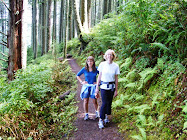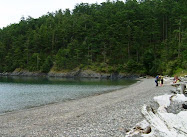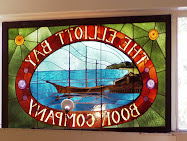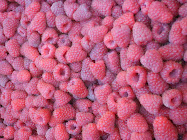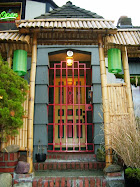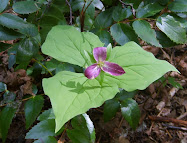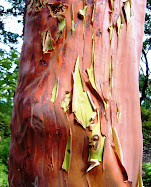If you live in the Pacific Northwest (or almost anywhere in North America), aren't you ready for winter to loosen its grip?
Living in a temperate climate here west of the Cascades, we Mossbacks are spared extreme cold like the frigid polar vortex, but the wet, gray, dark days seem to stretch on too long. Many of us jet away to warmer, tropical or desert getaways.
By mid-February, however, the days are getting noticeably longer. Hallelujah! So we've got this 'tween thing going on....it's dumping snow in the mountains and throwing major avalanches, while early spring flowers are in bloom just an hour away in the lowlands. It's wildly diverse.
Yesterday I headed to the mountains for some skiing in the epic snowfall. Over 2 feet of fresh pow! I hoped to be doing this:
But avalanches and downed trees converged to make the day go more like this:
See that line of traffic? We were turned around less than a mile from the Crystal Mountain turnoff. Mountain closed because a tree knocked out power to the whole mountain. We spent 5 hours driving up and back, covered 160 miles, including a 20-minute wait to use the loo at Wapiti Woolies in Greenwater, and no skiing.
Sigh.
So instead of moping, when I got home I took advantage of a break between storms and headed to nearby Carkeek Park. Nothing beats the frustration of hours in a car than a walk in the woods to witness early spring unfurling.
Right now the sweet, delicate snowdrops are in bloom just off the trail next to the historic Piper Orchard in the park. While these plants aren't native, these bulbs have spread in happy clumps throughout a patch of forest over the past century.
I hiked for over an hour through the lowland forest. I heard lots of birds singing, felt a slight remnant breeze from the overnight storm, and generally enjoyed spying signs of spring, like the first shoots of this skunk cabbage beside the trail.
In a few months it will be several feet high and look like something that belongs in the tropics.
I once again appreciated our lush temperate rainforest abundance of moss and ferns, even though I couldn't enjoy the several feet of fresh snow just an hour away in the mountains. At least on this day.
While spring is charging at us, I'll head again to the snowy alpine mountains with
my skis in a few days. Then I'll be walking in the woods again. Back and forth.
This proximity and diversity is one of the reasons I love living here.
Tuesday, February 18, 2014
Wednesday, February 5, 2014
Super Party for our Super Bowl Champs!
Today most of Seattle and much of the Puget Sound region came downtown to celebrate our Super Bowl champs Seahawks. And what a party!
While temps hovered just above 20 degrees (my toes and fingers say even colder), around 700,000 12s endured freezing cold to be a part of the collective joy that has gripped Seattle. That's 65,000 more than the total population of Seattle.
Mutual love for the youthful and exhuberant Hawks has even thawed the so-called Seattle Freeze. Over the last month, and especially the last few days, this city has become a melting pot of joyous, smiling, extra-friendly, happy people. In mid-winter no less!
Along the parade route, people made sure to let the kids be in the front so they could see the Hawks as they rode by in open-topped Hum-vees and other big rigs. Our Mayor Murray overruled our Superintent of Schools by suggesting that parents be allowed to take their kids out of school for the parade. Best mayor ever!
People were hanging out of windows, balconies, rooftops, trees, and even perched atop Honey Buckets to see and cheer the Hawks. And while there were thousands of outstretched arms taking pictures with their phones and cameras, over half the Hawks were taking shots of us.
Being the polite city we are, there were no arrests, although one guy was hauled off in handcuffs for not keeping back. If you haven't checked out the #howseattleriots string on Twitter, it's a humorous Portlandia-esque take on Seattle's post-Super Bowl behavior.
All in all we Seattleites want to savor our moment as long as possible. The city's ardor for this team seems to transcend mere awesome football players and games. The special feeling for this special team was palpable all season, and it just continued to build. Civic pride is rampant. After "hiding" in plain sight all these years in the Upper Left Hand corner, we're finally recognized! We're all winners together!
We'll be floating on this high well into Spring.
While temps hovered just above 20 degrees (my toes and fingers say even colder), around 700,000 12s endured freezing cold to be a part of the collective joy that has gripped Seattle. That's 65,000 more than the total population of Seattle.
Mutual love for the youthful and exhuberant Hawks has even thawed the so-called Seattle Freeze. Over the last month, and especially the last few days, this city has become a melting pot of joyous, smiling, extra-friendly, happy people. In mid-winter no less!
Along the parade route, people made sure to let the kids be in the front so they could see the Hawks as they rode by in open-topped Hum-vees and other big rigs. Our Mayor Murray overruled our Superintent of Schools by suggesting that parents be allowed to take their kids out of school for the parade. Best mayor ever!
People were hanging out of windows, balconies, rooftops, trees, and even perched atop Honey Buckets to see and cheer the Hawks. And while there were thousands of outstretched arms taking pictures with their phones and cameras, over half the Hawks were taking shots of us.
 |
| Beast Mode! Running back Marshawn Lynch filming me. :) |
Being the polite city we are, there were no arrests, although one guy was hauled off in handcuffs for not keeping back. If you haven't checked out the #howseattleriots string on Twitter, it's a humorous Portlandia-esque take on Seattle's post-Super Bowl behavior.
All in all we Seattleites want to savor our moment as long as possible. The city's ardor for this team seems to transcend mere awesome football players and games. The special feeling for this special team was palpable all season, and it just continued to build. Civic pride is rampant. After "hiding" in plain sight all these years in the Upper Left Hand corner, we're finally recognized! We're all winners together!
We'll be floating on this high well into Spring.
Wednesday, January 29, 2014
Saving Endangered Pacific Northwest Whales and Salmon: It Starts with You
While locals and tourists thrill at seeing our resident orca whales in Puget Sound, many of you might not know how precarious are their chances for long-term survival.
Our endangered Southern Resident Killer Whale population here in the southern Salish Sea is declining, down 20 percent since the 1990s to only 80 whales. Many of our Chinook salmon runs, the food of choice for these orcas, are endangered and declining. The forage fish that the Chinook and other salmon eat are declining.
It's all interconnected, and we humans are largely to blame for these declines.
We've dumped toxic contaminants into our seas and oceans, logged and trashed pristine watersheds that support salmon, altered the landscape in harmful ways, and the list just goes on. Shame on us!
But there are good people working hard to help our whales and salmon.
 |
| Southern Resident orcas in Puget Sound. Photo by Alisa Lemire Brooks. |
Last weekend I was lucky to attend part of the Orca Network-sponsored Way of Whales event on Whidbey Island. This year the place was packed as never before, and several hundred people gathered to listen to experts discuss scientific research on things such as orca food preferences, their poop that yields a wealth of information, and the struggle for Columbia River Basin salmon, an important orca food source, to survive.
 |
| Panel of biologists, activists, and government researchers discuss local orca issues. |
We saw a lovely short film about our Southern Residents produced by a European filmmaker that featured 80-year-old J8 (Speiden), the second-oldest orca of the J pod who disappeared and is presumed deceased as of September 2013. The Southern Resident orcas spend their whole lives with their extended families.
Still out there wild and surviving is J2 (Granny), presumed born in 1911. It breaks my heart that she has seen all of her children and grandchildren be born and die, but she's still looking after her pod.
So here's my takeaway from the event. The panelists were asked what one thing they would recommend to help our orcas survive.
- Don't eat farmed salmon (they contaminate wild stocks).
- Learn more about what you can do and share that information.
- Think about linkages to marine health of your everyday actions (e.g., don't use weed killer in your yard that could end up in Puget Sound through groundwater transport).
- Join and support organizations such as Save Our Wild Salmon that are engaged in policy issues to support changes we need to help salmon, such as demolishing some key Snake River dams.
- Learn about your watershed where you live.
- Plant more trees.
- Pay more attention to what you're eating and how its production affects our environment (eat more organic).
- Pay more attention to the world around you, become a well-informed citizen and...
- TAKE ACTION!
Sunday, January 19, 2014
Go Hawks!
Just a little pause from the usual nature and adventure posts to congratulate our own Super Bowl-bound Seattle Seahawks on their NFC championship. What a season so far!
Lots of whooping and cheering in Seattle tonight, and many 12th Man flags and signs all over the city.
Hey, even the vendors at our farmers markets got into the spirit.
So how about this: if you're a Hawks fan and excited for their upcoming Super Bowl matchup, select Cool under the Reactions below or even share the love by leaving a comment.
Let's spread the city and regional pride!
Lots of whooping and cheering in Seattle tonight, and many 12th Man flags and signs all over the city.
Hey, even the vendors at our farmers markets got into the spirit.
So how about this: if you're a Hawks fan and excited for their upcoming Super Bowl matchup, select Cool under the Reactions below or even share the love by leaving a comment.
Let's spread the city and regional pride!
Wednesday, January 8, 2014
Seattle Sunsets: Many Shades of Awe
Yesterday, I gasped at the sunset
in a newness of awe
I never before experienced;
that which seemingly occurred
the day before, the yesterday,
reiterated the today in such a special way
I gasped
-From "Gasp" by Gillena Cox
Do you ever stop to watch the sunset?
While we don't see so many here in western Washington during winter, when we do it's often a spectacular display. (For you early birds, same can be said for the sunrise.)
Throughout the year I'm drawn to Puget Sound beaches to witness the sun slipping behind the jagged spine of the Olympic Mountains. Like a serrated knife facing skyward, these mountains slice the western horizon and provide a dramatic backdrop for day's end.
I can't get enough.
Most often I'm down at Carkeek Park near my home, where I also regularly walk in the woods. The big lawn with a panoramic view of the Sound is where I start, then cross over a pedestrian bridge spanning railroad tracks and down the stairs to the beach. (Passing trains always toot their horn to waving people clustered on the bridge above the tracks.)
Some evenings the beach is packed (usually nice weekend days), and sometimes I almost have the beach to myself. But there are always a few others there to witness the show.
One thing is consistent: I never tire of being there, never tire of hearing the gentle lap or rush of waves on the beach, never tire of seeing the sky change hues and clouds shift to shades of gold, pink, orange, and, sometimes, crimson red.
And I never tire of gulping in the visual feast of the Olympics cresting the horizon across the Sound.
When the sky darkens to early twilight, it's hard to tear myself away. Usually the evening chill finally drives me back to my car and on home.
Others come regularly. An older, wiry man can often be seen on the beach at Carkeek year-round, stripped down to bare chest and shorts, flailing his arms then plunging into the Sound for a few minutes of swimming in the cold water.
And I used to see an elderly couple parked above the beach every night silently watching the sunset. Haven't seen them for a few years now, but I still think of them and their evening ritual, grasping the remains of the day.
Where is your favorite spot to watch a sunset?
Thanks for visiting Pacific Northwest Seasons. I hope I inspire you to get out more and explore and protect this special corner of the world. Or even just appreciate your own slice of paradise, wherever you live.
For lots more photos and Northwest news between blog posts, Like Pacific Northwest Seasons on FaceBook or follow on Twitter.
Happy trails!
in a newness of awe
I never before experienced;
that which seemingly occurred
the day before, the yesterday,
reiterated the today in such a special way
I gasped
-From "Gasp" by Gillena Cox
Do you ever stop to watch the sunset?
While we don't see so many here in western Washington during winter, when we do it's often a spectacular display. (For you early birds, same can be said for the sunrise.)
Throughout the year I'm drawn to Puget Sound beaches to witness the sun slipping behind the jagged spine of the Olympic Mountains. Like a serrated knife facing skyward, these mountains slice the western horizon and provide a dramatic backdrop for day's end.
I can't get enough.
Most often I'm down at Carkeek Park near my home, where I also regularly walk in the woods. The big lawn with a panoramic view of the Sound is where I start, then cross over a pedestrian bridge spanning railroad tracks and down the stairs to the beach. (Passing trains always toot their horn to waving people clustered on the bridge above the tracks.)
Some evenings the beach is packed (usually nice weekend days), and sometimes I almost have the beach to myself. But there are always a few others there to witness the show.
One thing is consistent: I never tire of being there, never tire of hearing the gentle lap or rush of waves on the beach, never tire of seeing the sky change hues and clouds shift to shades of gold, pink, orange, and, sometimes, crimson red.
And I never tire of gulping in the visual feast of the Olympics cresting the horizon across the Sound.
When the sky darkens to early twilight, it's hard to tear myself away. Usually the evening chill finally drives me back to my car and on home.
Others come regularly. An older, wiry man can often be seen on the beach at Carkeek year-round, stripped down to bare chest and shorts, flailing his arms then plunging into the Sound for a few minutes of swimming in the cold water.
And I used to see an elderly couple parked above the beach every night silently watching the sunset. Haven't seen them for a few years now, but I still think of them and their evening ritual, grasping the remains of the day.
Where is your favorite spot to watch a sunset?
Thanks for visiting Pacific Northwest Seasons. I hope I inspire you to get out more and explore and protect this special corner of the world. Or even just appreciate your own slice of paradise, wherever you live.
For lots more photos and Northwest news between blog posts, Like Pacific Northwest Seasons on FaceBook or follow on Twitter.
Happy trails!
Tuesday, December 31, 2013
Pacific Northwest Highlights, Looking Back and Ahead
 |
| Descent into Sea-Tac, Mt. Rainier, May 2013. |
I've tried to winnow down over a thousand photos taken in 2013 to just one (or two) a month to sum up the year in pictures here in the Northwest. Very hard to do!
These photos mostly reflect my outdoors passions. What would your year in photos look like?
While business was slow, I got out to play more than usual in the Pacific Northwest outdoors. Not so great for the pocket book, but fantastic for my mental and physical health.
January
Just because it's chilly doesn't mean we should hibernate here in the dead of winter. Clear skies and snow made for some wonderful trips: Lake Quinault Lodge where I witnessed a spectacular sunset, the Olympic coastline, Orcas Island, and of course skiing in the Cascades.
 |
| Sunset over the lake from Lake Quinault Lodge, WA. |
With an uptake in mountain snowfall, more skiing at Stevens Pass and Crystal Mountain, and cross-country skiing the Iron Horse Trail, along with a trip east of the Cascades to Wenatchee and Leavenworth. An unusual irruption of snowy owls caused a female to spend a few months near Sunset Hill Park in Seattle's Ballard neighborhood.
 | |
| Fun in the fresh pow at Stevens Pass, WA. Photo by Linda Dimmit. |
 |
| Sunset Hill snowy owl. |
March is a shoulder month here in the Northwest between winter and early spring, but still lots of snow in the mountains and early spring flowers in the lowlands. A late month highlight was an overnight on Mt. Hood, with spectacular stars and a lovely sunrise at Timberline Lodge.
 |
| Crater Rock and Mt. Hood, OR, summit twilight. Photo by Scott Conover. |
Things start really waking up by April in the Northwest, and a seasonal favorite is the Skagit Valley Tulip Festival. Hint, don't go on a weekend if possible! Equally special is the display of native wildflowers over at Deception Pass State Park, where I joined a group from the Washington Native Plant Society. Also enjoyed a weekend at Suncadia Resort exploring the eastern Cascade crest.
 | |
| Deception Pass State Park, WA. |
 |
| Skagit tulips, WA. |
Now we're talkin'. Hiking. Kayaking. Late snow in the mountains.Trips included a typical wet Memorial Day weekend camping on Shaw and Orcas Islands in the San Juans with great hikes and kayaking, an overnight to Paradise Lodge on Mt. Rainier to celebrate Washington's National Parks Fund, and dashing up Rattlesnake Ledge.
 |
| Magical and historic Doe Bay, Orcas Island, WA. |
June is when we Northwesterners are out camping, hiking, and more but getting a little impatient for the clouds to disappear (although they do some days). Summer never really starts until after the Fourth of July here. Regardless, enjoyed camping/hiking in the Teanaway region in Washington's central Cascades, hikes to Annette Lake and Little Si, kayak camping on Maury Island, and epic summer sunsets from Seattle's Carkeek Park.
 |
| Summer Solstice sunset, Carkeek Park, Seattle, WA. |
Ah July. Late month brings the crest of summer here in the Northwest. So much to get out and do. Outings included hiking ever popular Wallace Falls and Snow Lake, kayaking the Skykomish River and through the Ballard Locks, and an epic trip kayak camping off remote northwest Vancouver Island in the Bunsby Islands.
 |
| Cuttle Islets, Checleset Ecological Reserve, Vancouver Island, B.C. |
August is rich, mellow, and fantastic for high elevation hiking or any outdoors pursuit here. Or maybe just spending a weekend away with friends at a rented cabin, like I did in Hood River Valley. Kayak camping was a theme this year, and an overnight to Sucia Island in the northern San Juan Islands was crowded at the campsite but wonderful.
 |
| Sucia Island sunset paddle, WA. |
It just keeps getting better. September is often our best month of the year weather-wise in western Washington and Oregon. Time for getting together for late summer picnics, harvesting wine grapes, and early fall trips back to Orcas Island. So much to do and see and not enough weekends!
 | |
| Annual grape harvest, Whidbey Island Winery, Langley, WA. |
Oh October! My favorite month of the year. Whoever says we don't have fall colors here in the Northwest has never gone on a hike in the Cascades or to our Japanese gardens around the region. 'Twas a spectacular autumn hiking season this past fall, with hikes to Mason Lake, Mt. Pilchuck, Beckler Peak, and Lodge Lake in Washington's Cascades. More small farm harvesting, too, with a soggy but fun weekend in the Willamette Valley.
 |
| View west down I-90 corridor from Ira Spring Trail enroute to Mason Lake, WA. |
Usually November is our stormiest month, but 2013 brought an unusual dry but chilly spell. Highlights were a weekend in the Portland area hiking to the top of Multnomah Falls and beyond, bicycling around Portland's waterfront, watching the salmon spawning in Carkeek Park, a sweet trip to Seattle's Japanese garden, and a perfect Thanksgiving--doing the Seattle Turkey Trot before the ferry to Bainbridge Island for dinner.
 |
| Base of upper Multnomah Falls, OR. |
Usually we're skiing on December weekends, but in 2013 there is barely enough snow to operate and some areas aren't even open yet. It's a crazy busy month anyway. Walks in the lowland forest at Carkeek Park satisfied my need for outdoors nourishment.
 |
| Carkeek Park trail, Seattle, WA. |
Happy New Year and wishing you a 2014 full of laughter, good fun, and lots of smiles.
BTW for lots more photos and NW news between blog posts, Like Pacific Northwest Seasons on FaceBook or follow on Twitter.
Tuesday, December 17, 2013
Salish Sea Marine Sanctuary & Coastal Trail: Let's Help Make it Happen
 If you've been fortunate enough to see our Southern Resident orca (killer) whales roaming the Salish Sea
in northwest Washington or southwest British Columbia, you know they inspire awe—and, for many, a fierce desire to protect these highly
intelligent mammals.
If you've been fortunate enough to see our Southern Resident orca (killer) whales roaming the Salish Sea
in northwest Washington or southwest British Columbia, you know they inspire awe—and, for many, a fierce desire to protect these highly
intelligent mammals. For a man leading a seemingly daunting task of establishing a new marine sanctuary, Douglas Tolchin seems anything but daunted. While speaking at the Water Symposium in Seattle recently, this tall, silver-haired yet boyish man inspired the crowd with his optimism and enthusiasm for the proposed Salish Sea Marine Sanctuary & Coastal Trail.
What defines the Salish Sea? Geographically, it's the 7,000-square-mile body of water that includes the Georgia Strait in B.C., the Strait of Juan de Fuca that straddles the U.S.-Canadian border, and Puget Sound in Washington.
The Coast Salish people were the first to formally recognize the Salish Sea name, incorporating it into their collective culture in 2008. The U.S. and Canadian governments adopted the name in 2009 and 2010, respectively.
As a native-born Seattleite who has spent many happy days playing on Puget Sound beaches and kayaking its waters, I'm all for this vision to restore wildlife populations throughout the Salish Sea to more than 50 percent of historic levels—as soon as possible.
 |
| Southern Resident orca whale. October 2012 Puget Sound. Photo by Alisa Lemire Brooks. |
It's time to make things right.
Tolchin founded the Salish Sea Marine Sanctuary & Coastal Trail effort, but he envisions a widespread involvement. "For the Sanctuary to reach most or all of its full
potential, it is imperative that this be a widespread grassroots people-up and
also indigenous-led movement. I foresee Coast Salish First Nations and
Peoples substantially leading and shepherding the Sanctuary's vision and
implementation through time. Hopefully with the active and energetic help
of a million or more newcomers, the sooner the better."
 |
| Harbor seal, Cattle Pass, San Juan Islands. |
.jpg) |
| Mt. Baker hovers over the Salish Sea near Bellingham, Washington. |
"It will directly and substantially benefit virtually everyone living throughout the entire Salish Sea watershed, in myriad ways. It is emerging from unprecedented unified vision and action between people of Coast Salish First Nations, British Columbia and Washington State...together."
 |
| View across the U.S.-Canadian border to Vancouver Island. |
In addition to increased wildlife protection, a bicycling and hiking trail encircling the Salish Sea is envisioned as part of the effort.
"We're having a lot of fun creating and designing the Salish Sea Marine Sanctuary & Coastal Trail. We're involving children, musicians, artists, scientists, students, teachers, business people, videographers, storytellers... pretty much everyone and anyone who loves animals, clean water, clean air, healthy food and a better future," says Tolchin.
"We're having a lot of fun creating and designing the Salish Sea Marine Sanctuary & Coastal Trail. We're involving children, musicians, artists, scientists, students, teachers, business people, videographers, storytellers... pretty much everyone and anyone who loves animals, clean water, clean air, healthy food and a better future," says Tolchin.
To help make this happen, start by Liking the Salish Sea Marine Sanctuary & Coastal Trail page on FaceBook, where you can see upcoming events and updates. Then check out their website, which details more about their vision.
 |
| San Juan Islands, Washington |
It's time to join the party!
We'd love to hear your ideas about this proposal and your Salish Sea experiences. Jump in with a comment below.
Thanks for visiting and sharing Pacific Northwest Seasons.
Subscribe to:
Posts (Atom)
































